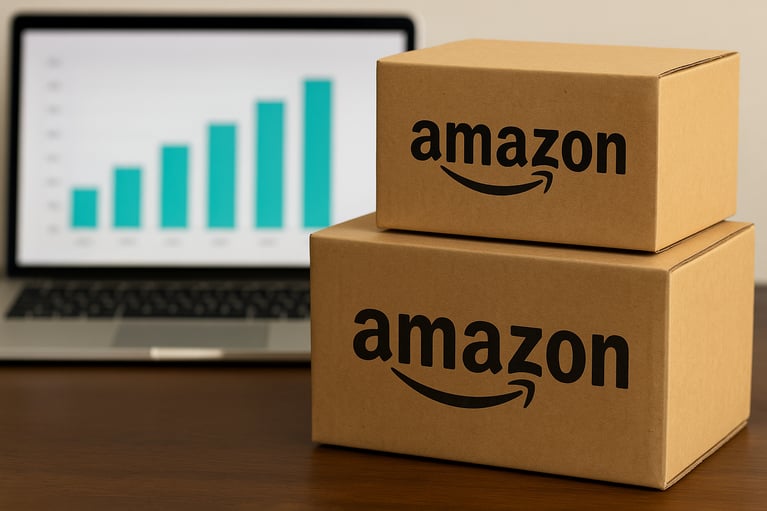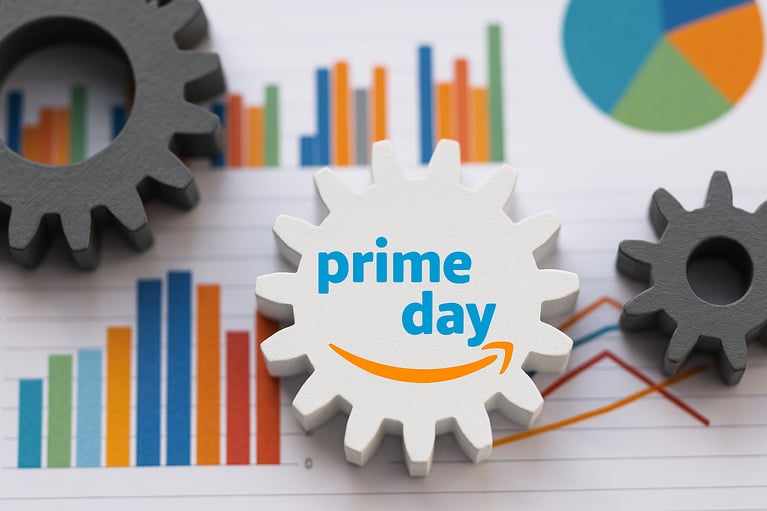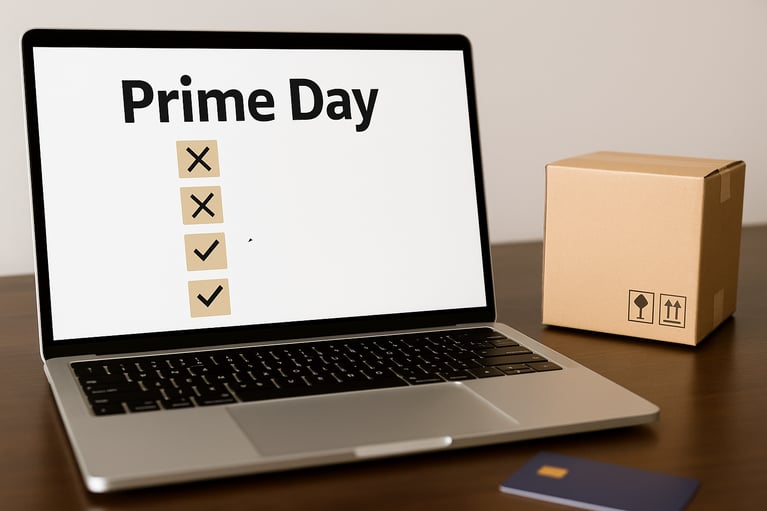Prime Day 2025 is approaching fast, and the stakes have never been higher. With over 2 million sellers on Amazon and increasingly savvy shoppers, brands that fail to optimize their Amazon listings are essentially handing market share to their competitors on a silver platter.
Consider this: 62% of shoppers begin their search for new products on Amazon. If your listings aren't optimized for discoverability and conversion, you're invisible to the very customers actively searching for your products.
The harsh reality? Good advertising can't save bad listings. If your listing lacks clarity, credibility, or relevance, shoppers will bounce, often to your competitors.
Better listings drive more organic traffic, which improves search rankings, which drives more traffic, which increases conversion rates, which further improves rankings. It's a virtuous cycle that separates market leaders from followers.
1. Audit what you already have before making changes
Before jumping into content tweaks or keyword changes, take a step back.
Review Past Prime Day Performance
Start with your own data. Look back at previous Prime Day campaigns to identify what worked and what didn’t. Which listings drove high traffic but saw low conversion? These are red flags that your content, images or keywords didn’t align with shopper expectations.
Also examine performance from other major sales events like Black Friday and Cyber Monday. Patterns in successful products and top-selling keywords will help you focus on high-potential products this year.
Benchmark Against Competitors
Next, analyze listings from top-performing competitors in your category. What keywords are they ranking for? How are they structuring their bullet points and titles? What kind of visuals are they using? This comparative audit helps you identify gaps in your current content strategy and set measurable performance goals for this year's event.
2. Build a Keyword Strategy That Targets Intent, Not Just Traffic
Keywords remain the backbone of discoverability on Amazon. But it's not just about stuffing high-volume terms. You need keywords that match buyer intent and drive qualified traffic ready to convert.
Build a Conversion-Driven Keyword Plan
Begin by identifying a mix of short-tail, long-tail, and natural language (voice-search-friendly) keywords. Long-tail phrases may have lower search volume, but they often convert at a higher rate due to their specificity.
Make use of backend search terms. Even though shoppers don't see them, Amazon’s algorithm uses them to determine where your listing appears.
Keywords should be integrated naturally across your product title, bullet points, backend terms, A+ content and even image alt-text. These touchpoints reinforce relevance across every stage of the shopper’s journey.
Monitor and Adjust
Keyword strategy isn't static especially during high-velocity sales periods like Prime Day. Use tools like Amazon Seller Central to monitor performance in real-time. Swap in trending terms, retire underperformers, and continually align your listings with live search behavior.
3. Elevate every section of your Product Detail Page (PDP)
Once traffic arrives on your PDP, the job shifts from visibility to persuasion. Every section of your listing should be engineered to convert.
Titles that drive traffic and clarity
Your product title is your first impression. Use the full 250-character allowance (if your category permits) but keep it natural. Prioritize high-value keywords and benefits early in the title. Structure matters:
Brand + Variant (size/color) + Key Features + Prime Day Offer
Avoid keyword stuffing and ensure the title reads well on both desktop and mobile. If Amazon permits, add Prime Day discounts to create urgency.
Bullet points that convert scanners into buyers
Bullet points should clearly communicate benefits, not just features. Each one should follow a mobile-first format:
ALL CAPS benefit + clear explanation
Shoppers skim, especially on mobile, so front-load critical selling points and address common objections early.
Use Amazon’s AI but don’t trust it blindly
If you're short on time, Amazon’s “Enhance My Listing” tool can help. It uses AI to recommend improvements across titles, bullets and product descriptions. While it's a great starting point, don’t rely on it blindly. Every suggestion should be reviewed for accuracy, keyword quality and brand consistency.
Visual content that stops the scroll
Visuals can make or break your listing. Use all 7–8 available image slots, including:
- A clear, high-resolution hero image (1000×1000 JPEG on a white background)
- Detailed product shots from multiple angles
- Lifestyle photos that show your product in use
- Infographics that highlight key features or Prime Day-specific promotions
Ensure images are mobile-friendly. Avoid clutter, use minimal text and make sure important details are legible even on small screens. Rename image files with relevant keywords to boost SEO.
Video that builds trust and reduces doubt
Video content helps shoppers quickly understand your product and builds trust. Use videos to demonstrate functionality, showcase unique features and reinforce Prime Day promotions. Add video to both your Enhanced Brand Content (EBC) and the Video Shorts section for maximum reach.
4. Turn your Amazon Storefront into a conversion hub
Your Amazon storefront is your brand’s landing page on the marketplace. During Prime Day, it needs to be just as conversion-ready as your product listings.
- Feature your best deals prominently
- Create gift guides and seasonal collections
- Use the navigation to guide users through your offerings
- Make sure your brand value is front and center
5. Enhance with A+ Content and brand storytelling
Enhanced Brand Content (or A+ Content) can significantly increase conversion rates by giving shoppers the full picture of your product. Use it to add visual storytelling, product comparisons, rich images and FAQs. It’s especially useful for mobile, where rich visuals outperform dense blocks of text.
Don’t overlook the Brand Story module. It’s a powerful way to connect emotionally with customers and reinforce brand loyalty. Use this space to share your mission, values or origin story while subtly reinforcing your product’s value.
6. Run A/B tests now to prepare for Prime Day
The best way to know what works? Test it. Use Amazon Experiments or third-party tools to A/B test your titles, bullet points, images and A+ content layouts. Start testing at least a few weeks before Prime Day so you have time to implement insights.
Track which keywords drive sales, which visuals boost engagement, and which messaging resonates most with customers. Use this data to inform your Prime Day content strategy and document what you learn for Q4 and future events.
Prime Day optimization that pays off long-term
Listing optimization is one of the highest-leverage activities you can invest in before Prime Day. You’ll not only drive more conversions during the event but also build a stronger foundation for Q4 and beyond.
Our growth marketing team specializes in end-to-end Amazon listing optimization: from keyword research to creative production to storefront UX. If you're serious about making this Prime Day your most profitable one yet, let’s build a strategy that transforms clicks into conversions and browsers into buyers.
Subscribe to our emails for the latest industry insights!
By entering your email, you agree to receive marketing emails from Cart.com





